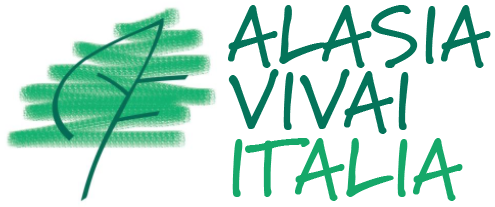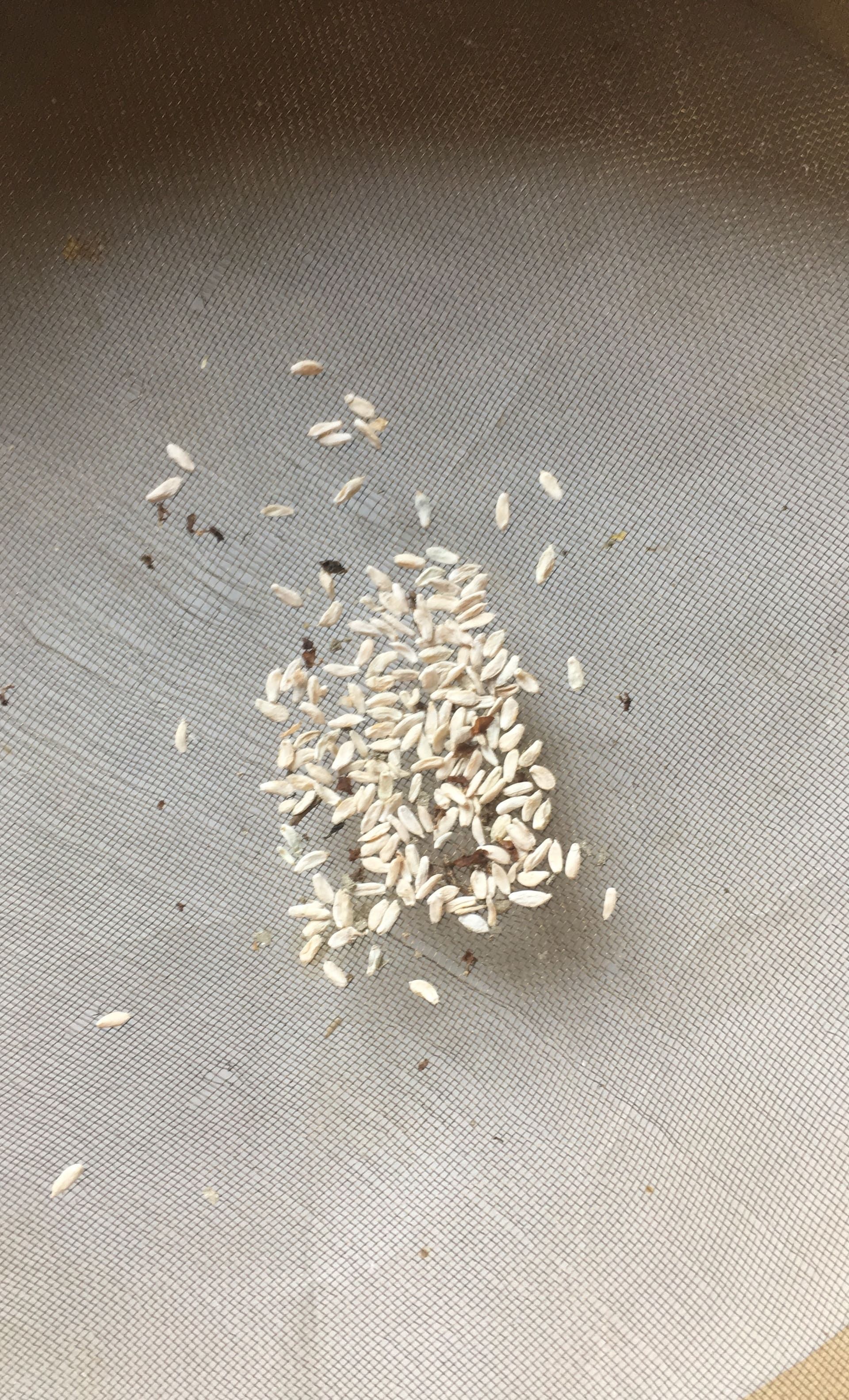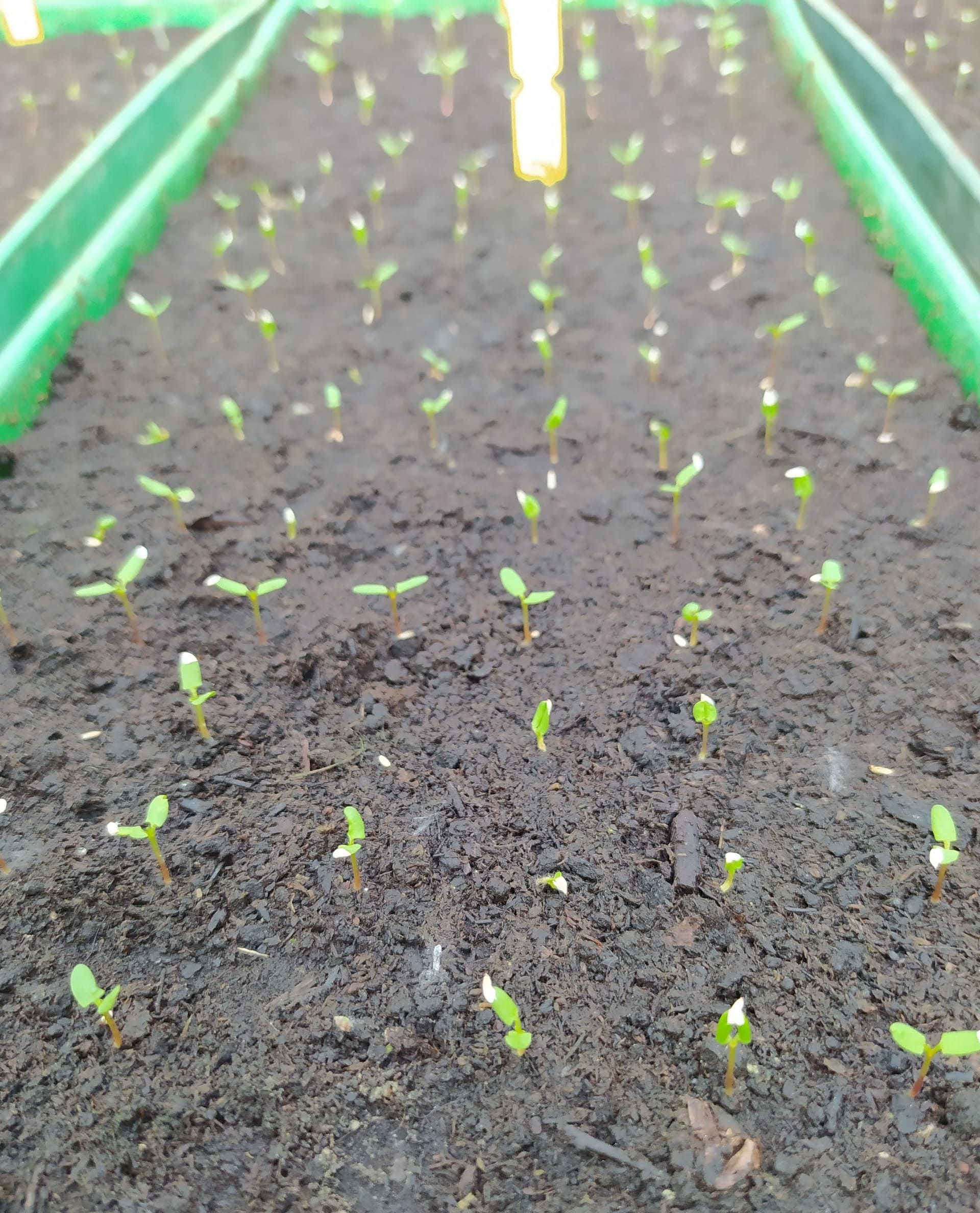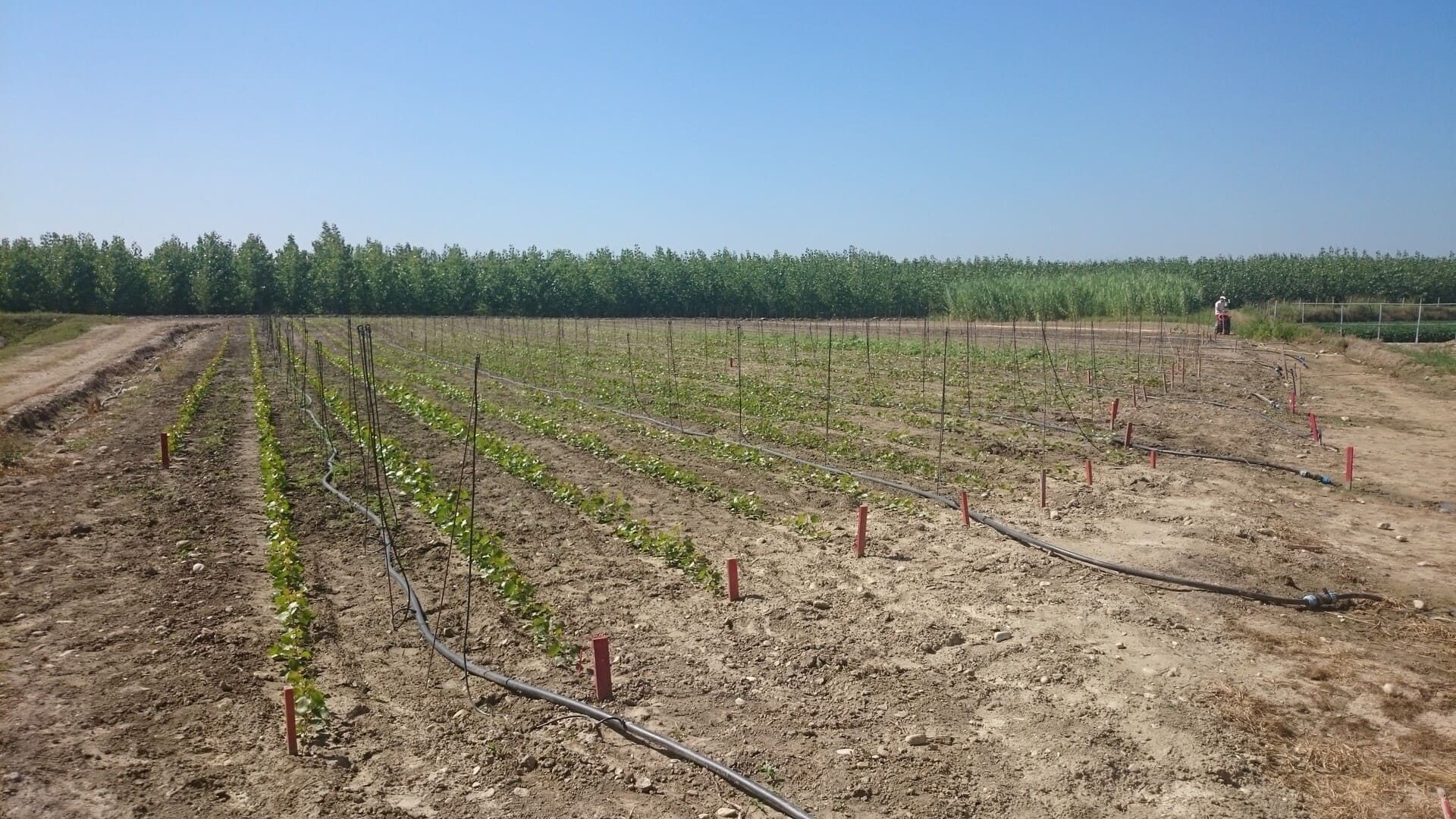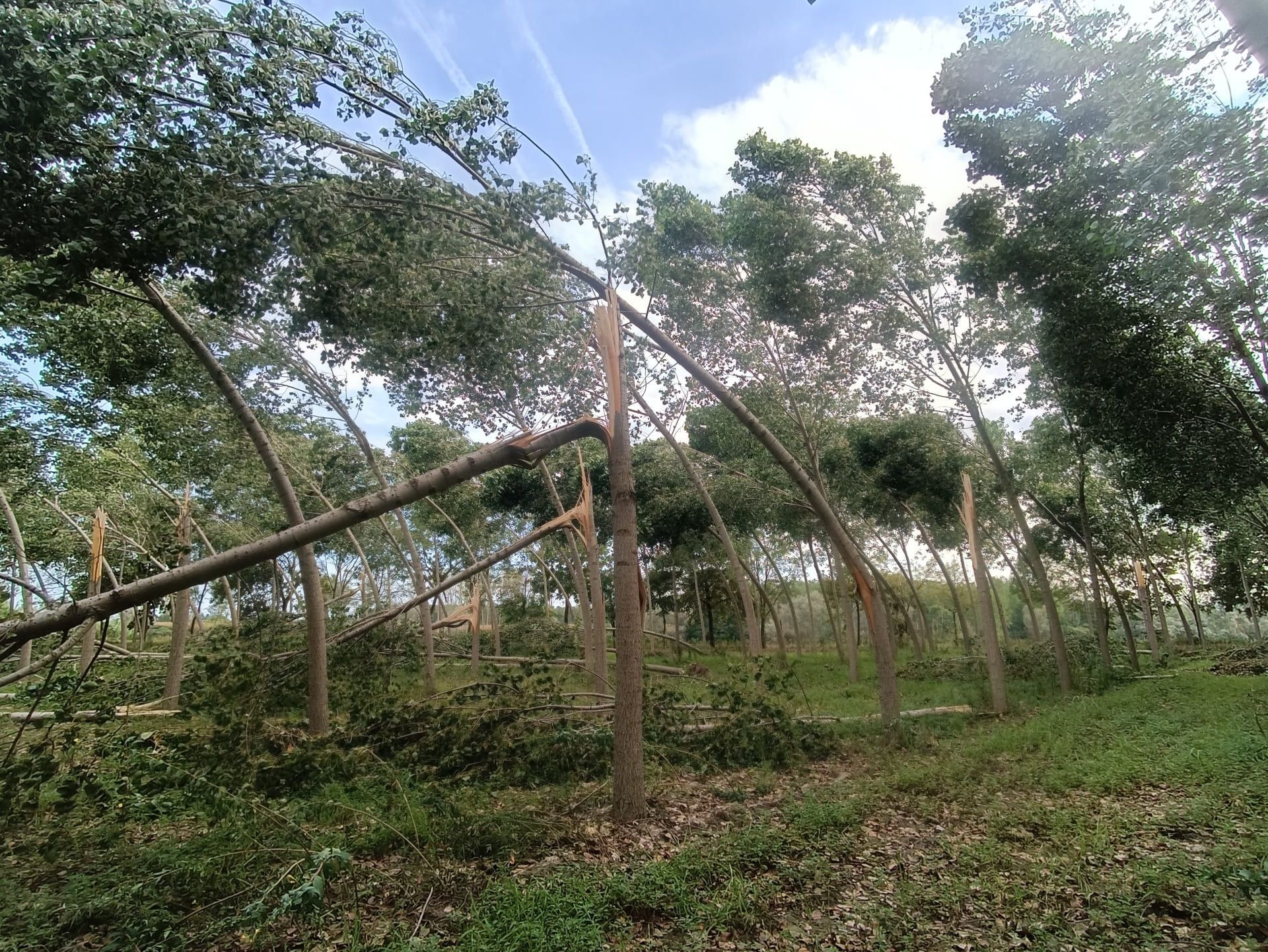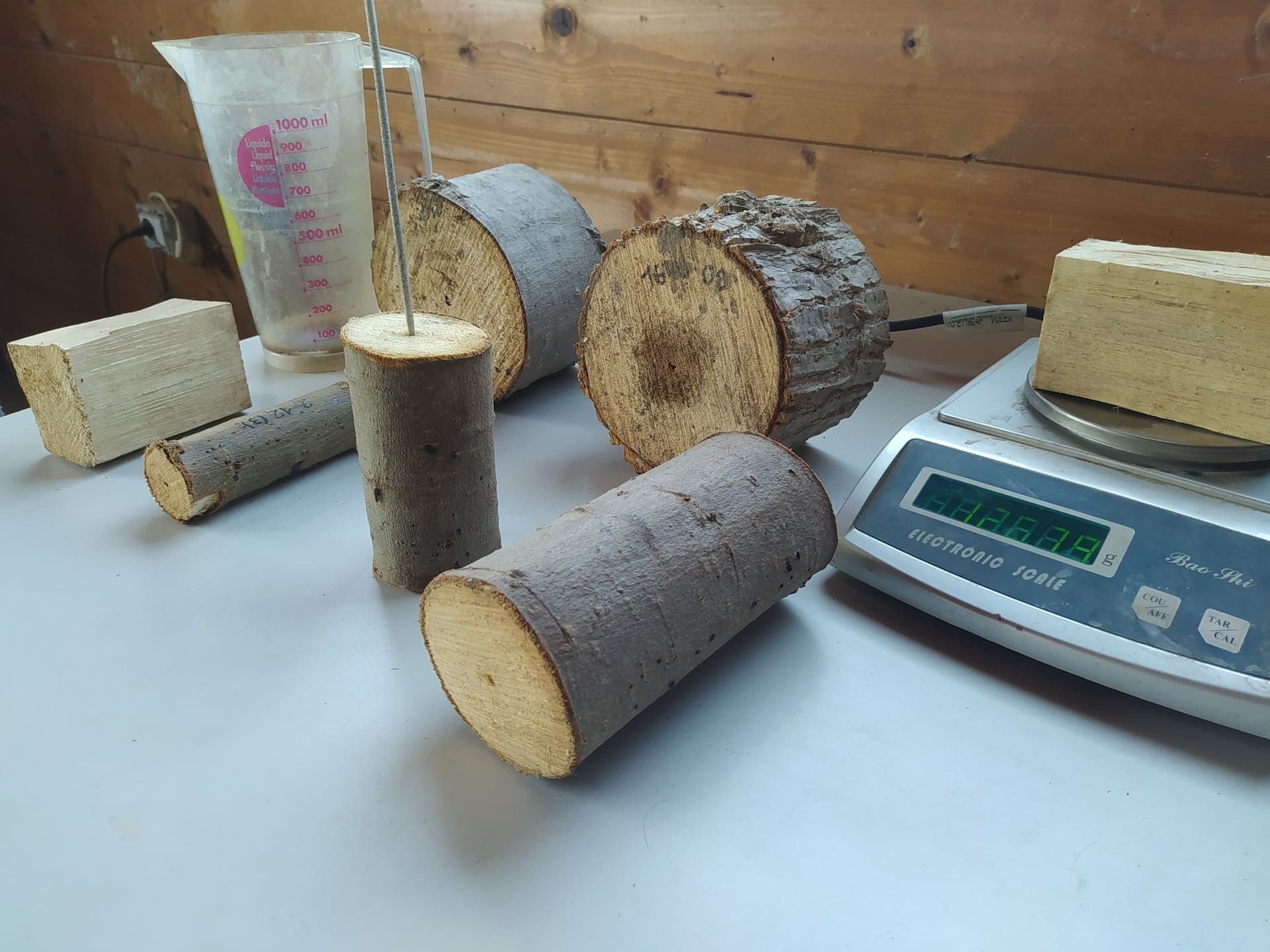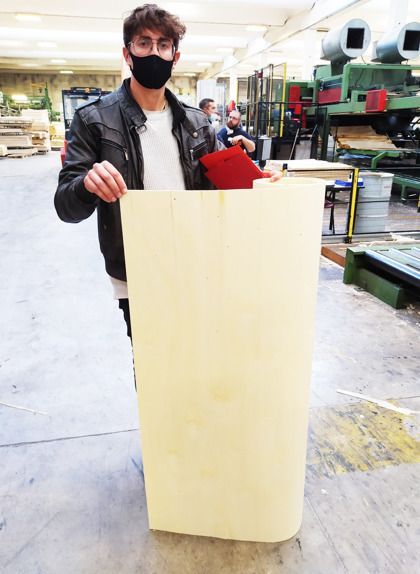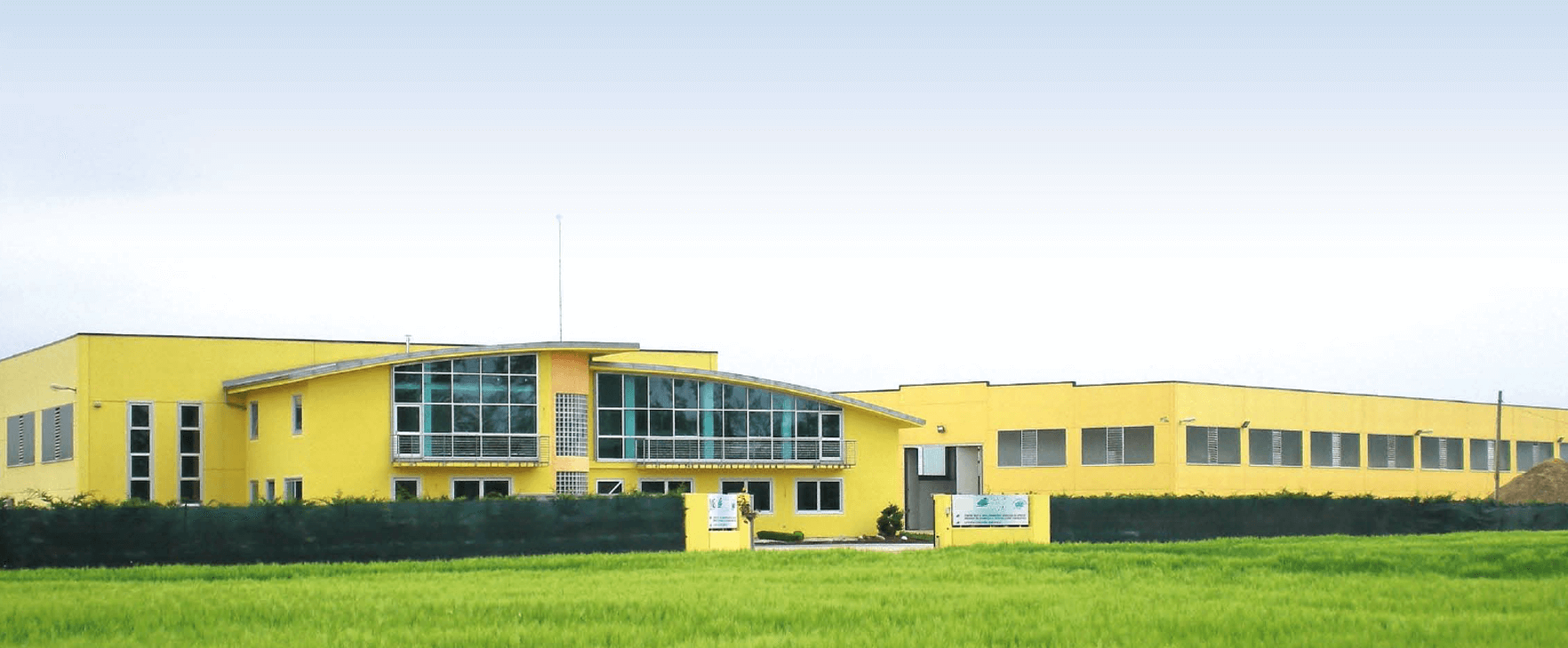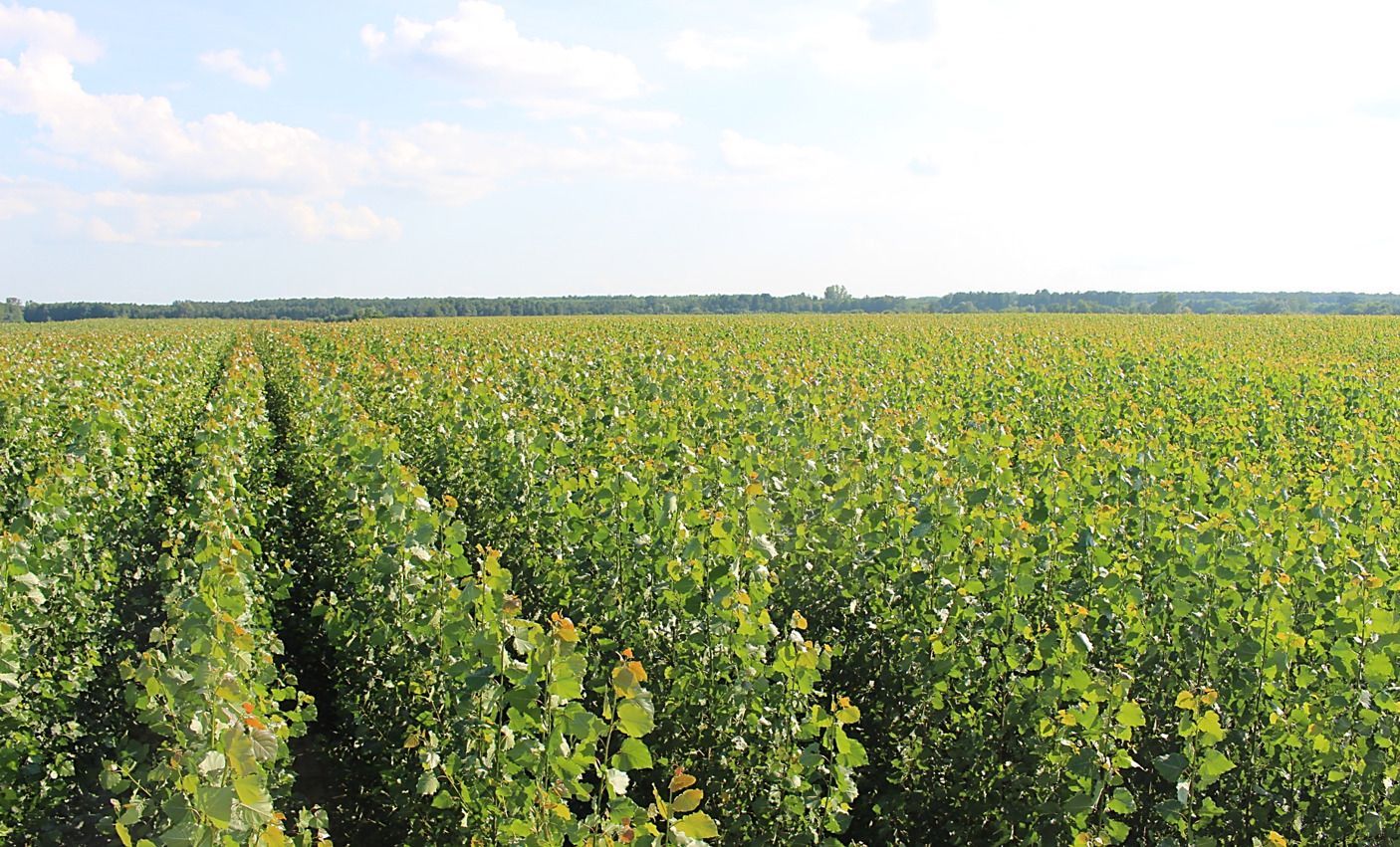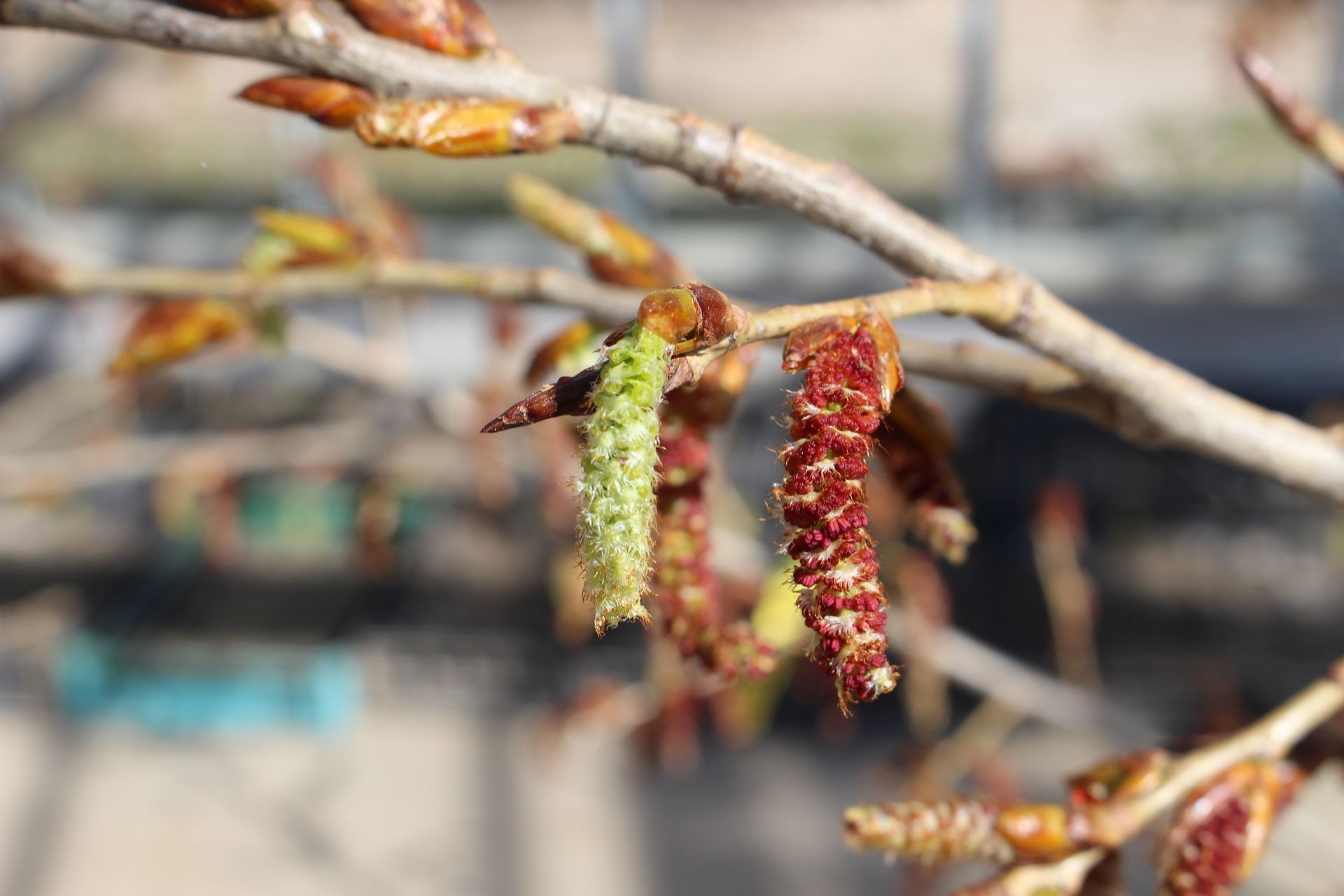Genetic improvement of poplar
More than 40 years of work: Europe's largest genetic improvement programme on poplars.
RESEARCH
Research and development of new clones for poplar cultivation and biomass for Italy and Europe
MORE THAN 40 YEARS OF WORK
The poplar genetic improvement programme
We have been working on an ambitious genetic improvement programme since 1983 aimed at selecting new poplar clones (in recent years also extended to fast-growing herbaceous species such as Arundo Donax). This makes the group the only European private company carrying out such a project.
Thanks to our meticulous work, today we are able to propose a wide range of varieties of poplar and Arundo clones capable of adapting to multiple cultivation systems and different pedoclimatic conditions in Europe.
We work on three genetic lines:
- Poplar clones for the production of two-year cycle biomass intended for the production of second-generation bioethanol
- Poplar clones with a five-year cycle intended for the OSB panels and paper sector
- Poplar clones with an 8/10 year cycle intended for the plywood industry
Genetic improvement, experimental activities: we carry out experimentation and research activities for the creation of new clones
Poplars (Populus spp.) are a species of tree widely grown in Europe for which there are proven, highly mechanised cultivation techniques. Alasia Vivai Italia has chosen to focus its genetic improvement programme on the Salicaceae family, and in particular on the genus Populus, due to its distinctive characteristics, such as:
- high productivity in countries with a temperate climate;
- good suitability for cultivation at various latitudes;
- rapid growth;
- broad intra- and inter-specific variability;
- high propensity to undergo hybridisation;
- genetic improvement to generate increasingly high-performance clones.
Our strategy for the genetic improvement of poplars
The programme we follow is aimed at identifying the best germplasm, collected in the natural populations of the various continents, for the development and selection of new mother or father plants to be used as a base material for creating new hybrids.
The resulting hybrids in turn are selected according to criteria related to the final destination of the product, biotic and abiotic resistance and site-specific adaptability.
The Genetic Improvement Programme
The programme includes a series of key points achieved over the years with the experience required to achieve good, long-lasting results:
- Gathering germplasm from different continents.
- Evaluating the best families of each species.
- Creating the Populetum for the selected families.
- Intra-specific crosses of the main species to genetically improve indigenous origin
- Progeny tests to identify the best hybrid combinations.
- The genetic variability between hybrids.
- Evaluating the biotic and abiotic conditions and the technological characteristics of wood.
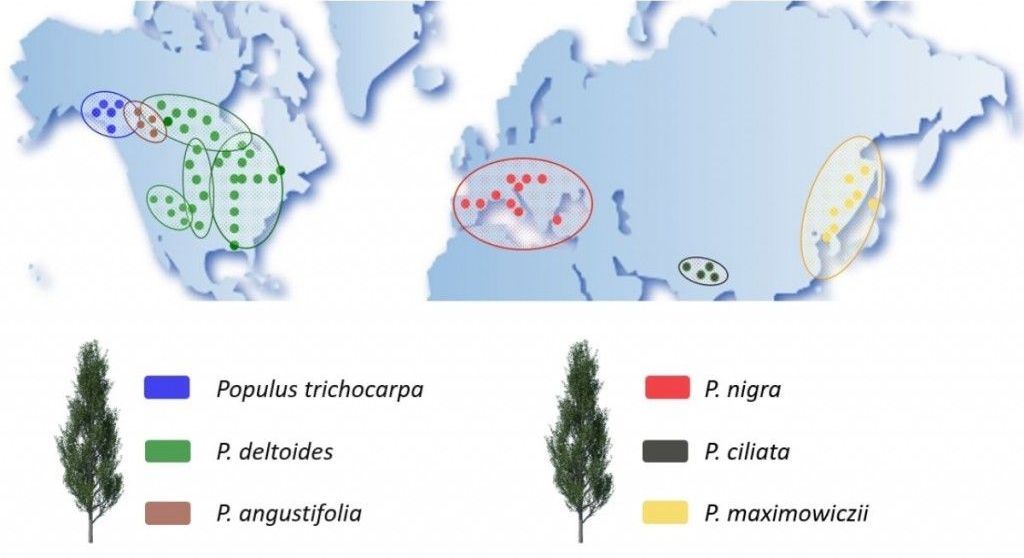
Gathering germplasm from different continents
Over the years the company has collected hundreds of thousands of seeds from major poplar areas throughout the Northern Hemisphere. This major project was conducted to obtain the greatest clonal variability of the main poplar species.
By collecting native species along the main rivers, the seeds that group the genetic characteristics of the various collection locations were grouped together to obtain maximum variability within each individual family.
The families collected come from hundreds of locations at least 50 km apart to reduce the chances that pollen can mix between one area and another, in this way the natural population chosen in a given location is pure.
The company gathered in North America from north to south, from west to east to obtain clones from different latitudes and longitudes so as to obtain parents suitable for any European pedoclimatic zone. Afterwards, collecting took place in Europe and Asia to complete the set of the main poplar species.
Evaluating the best families of each species
Evaluating the best families of each species takes place with an in-depth selection of the best genotypes within each individual source. This selection is based on the positive characteristics of each individual clone such as resistance to biotic and abiotic adversities such as fungal diseases, insects, cortical diseases and wind damage.
Once only 2 or 3 good samples are obtained for each of the best sources, creating a Populetum begins.
The parent field of the Alasia Vivai Italia is home to the widest variability of genotypes of all the major poplar species in the world. This field is used to bring each individual sample to sexual maturity and determine their sex, consequently the parent selected in the genetic improvement programme is used for creating the hybrids.
Intra-specific crosses of the main species
Once the knowledge of each selected parent has been obtained, based on phenological findings, growth, branches, shape and resistance to diseases in the experimental fields, a precise intra-specific improvement programme of the species is initiated with the aim of creating superior parents.
By combining the best monitored characteristics of the starting parents with specific controlled crosses, the improved future parents are constituted that will subsequently be selected and brought to maturity for their use in the hybrid development programme.
Some examples of intra-specific crosses of the main poplar species:
- Deltoides x Deltoides
- Trichocarpa x Trichocarpa
- Nigra x Nigra
- Maximowiczii x Maximowiczii
Progeny tests to identify the best hybrid combinations
Every year we carry out between 80 and 100 different hybrid combinations. From these we currently have 25 good combinations. During the winter, germplasm is collected of the main male parents to be used as pollinators during the spring for controlled crosses made in laboratories. Using thermo-insulating bags, we identify, group and isolate female flowers from external polluting pollen.
The receptive flowers are thus ready for pollination, which takes place in a controlled and artificial way, carefully following all the phases of flower elongation.
It is important to seize the perfect moment of maximum receptivity for a greater yield of successfully crossed hybrid seeds. Once mature, the flower creates actual pods containing the cotton along with the seeds inside. The seeds are collected and cultivated during the summer, first in the greenhouse and then in the seedbed in an open field. From good hybrid combinations we generate 40,000 to 70,000 new clones every year. In our experimental nurseries we have a turnover of about 80,000/100,000 new clones.
Genetic variability between hybrids
The company offers a vast hybrid genetic variability, the result of the enormous work carried out in gathering natural populations, in the improvement of the species, in site-specific selection, and on tests carried out in the field throughout Europe.
Only after years of selection and numerous tests, do we officially register the clones to be then launched on the market according to the various uses. We register only one clone for each good origin with the aim of protecting future poplars and avoiding the negative precedents experienced in European poplar cultivation. All our clones are patented.
Evaluating biotic and abiotic conditions
Our genetic improvement programme is based on 4 selection objectives:
- Field selection to determine resistance to diseases (rust, TSWV, spring defoliation and insects)
- Laboratory tests of leaf and insect diseases
- Testing on biotic and abiotic diseases of the trunk
- Phenological surveys and leaf fall of hybrids to understand site-specific adaptability
In order to improve the characteristics necessary for the development of a particular final product, we work on 5 additional objectives:
- Growth (height, diameter, production)
- The morphological characteristics of the plant (trunk shape, branching, apical dominance)
- Drought tolerance (we closely follow the aspect of climate change in recent years. It is necessary to introduce this key parameter to give increasing continuity to the plantation during the driest months or in situations where there is a lack of water)
- Wind resistance (crucial to identify the most resistant cultivars to avoid damage or risks such that would impact the plantation's value)
- Technological characteristics of wood
Wind resistance
The mechanical resistance of the wind is a key parameter in the selection of a new cultivar. It is important that the clone produces strong roots and that its root system develops in a dense and not superficial way as in the case of the I214 clone. In addition, the fibres that make up the trunk must be elastic and flexible. Genetics have a huge impact on this resistance. The use of sensitive parents or from areas that are not particularly affected by wind gusts during the year should be avoided.
Technological characteristics of wood
The key parameter for the plywood industry is the lightness of the panels used mainly for caravans and the nautical industry. The properties of wood (basic density, colour, tension wood) are analysed using peeling tests conducted with specialist companies.
Each of these selection objectives is associated with a series of selection criteria consisting of measurement protocols developed by the scientific community with the aim of accurately estimating the main characteristics of the plants being selected in relation to the objectives to be achieved. In this case, the field tests are organised according to the cultivation model to be adopted for the clone under evaluation: traditional poplar cultivation, short rotation forestry (SRF) or medium rotation forestry (MRF) plantations.
Basic density
Basic density, which is expressed in tons per cubic metre and indicates the ratio between the mass of dry wood and the volume of wood with moisture, is the most common indicator of wood fuel quality. This selection criteria is essential in the development of high-quality material for the production of panels (low basic density).
Otherwise, for energy purposes (high basic density), it is regularly evaluated in our clones to guide the choice in the selection process (Sabatti et al. 2014, Industrial Crops and Products 61:62-73). For clones destined for the production of Biofuel, we select clones with the highest percentage of cellulose and hemicellulose.
Production performance at sites of use
The aim of our research is to establish clones that are suitable for production purposes in the pedoclimatic conditions of destination. For this purpose, it is essential to test the performance of the selected clones in situ, to verify their adaptability to the environments where they will be marketed, and through the different crop cycles.
Other species of interest
The experimental activity also extends to species other than poplar, which can be used in energy crops, such as:
- Arundo donax
selection involves the collection of naturally occurring ecotypes and the subsequent identification and multiplication of the most productive genotypes extended to Southeast Asia, North Africa and Southern Europe. - Miscanthus spp.
selection involves the collection of germplasm in naturally occurring populations in Asia followed by hybridisation and selection of the best genotypes.
Our work
Alasia Vivai Italia uses its experience, accumulated over four generations, to bring the best techniques and skills to the development of poplar plantations for the benefit of our customers.
Contacts
Head of nursery production, Trade and Research:
Alasia Omar
Mobile
+39 331 7512816
Administrative office
Mobile
+39 338 2335314
Company Email
Company
Alasia Vivai Italia
P.I. 03803600042
Registered office: 12022 Busca (CN), Italia
Operational headquarters: 12038 Savigliano (CN), Italia


